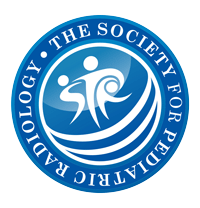-97%
Advancing Radiation Safety in Pediatric CT Imaging: Embracing the ALARA Principle
Introduction
The Society for Pediatric Radiology (SPR) has been steadfast in prioritizing the responsible and judicious use of imaging for children. Adhering to the fundamental principle of As Low As Reasonably Achievable (ALARA), the SPR advocates for minimizing radiation exposure during diagnostic examinations, particularly in the context of CT scans.
Intended Audience
This comprehensive program is designed for healthcare professionals involved in pediatric imaging, including:
- Pediatric radiologists
- General radiologists
- Medical imaging physicists
- CT technologists
- Representatives from both pediatric and adult healthcare facilities
Program Highlights
Topic 1: Understanding CT Indications for Children
- Expert perspectives from radiologists and emergency medicine physicians on when and why CT is appropriate for pediatric patients.
- A critical examination of the potential risks and benefits of medical imaging and the importance of balancing these considerations.
Topic 2: Optimizing CT Scanner Operations
- An overview of CT technologies specifically tailored for children, focusing on reducing radiation exposure.
- Guidance on managing Automatic Exposure Control (AEC) to achieve optimal image quality while minimizing dose.
- Comprehensive insights into Iterative Reconstruction techniques, their benefits, and how to implement them effectively.
Topic 3: Patient Dose and Potential Risks
- A personalized perspective on diagnostic radiation risks and the evolution of “Image Intelligently” practices.
- In-depth exploration of dose indices and their significance in measuring radiation exposure in children.
- Scientific discussion on determining organ dose and the challenges associated with cumulative dose assessment.
Topic 4: Managing Patient Dose
- Practical strategies for developing scanner-specific dose protocols that cater to individual patient needs.
- The pros and cons of organ shielding and its potential impact on image quality.
- Optimization of CT dose based on patient size and image quality requirements.
- Comprehensive tracking of individual patient doses and the accuracy of dose registries.
Topic 5: Quality Improvement
- Establishment of diagnostic reference ranges for CT scans and the role of the Diagnostic Imaging Reference Database (DIR).
- Global perspectives on CT imaging practices and lessons learned for improving patient care.
- A practical approach to quality improvement in pediatric CT angiography.
Topic 6: Training and Communication
- Resources for educating healthcare professionals and parents about CT imaging and radiation safety.
- Effective communication strategies for discussing CT scans with parents and ensuring informed decision-making.
- State-of-the-art CT education and certification programs for technologists.
Program Outcomes
Upon completing this program, participants will:
- Understand the progress made in radiation protection for children undergoing CT scans.
- Critically evaluate scientific evidence on dose and risk estimates in pediatric imaging.
- Accurately interpret CT dose estimates and their significance for children’s health.
- Implement automated and manual strategies to optimize CT protocols for children.
- Develop a systematic approach to creating evidence-based CT protocols for various patient populations.
- Effectively manage radiation dose in pediatric patients, safeguarding their health while ensuring diagnostic accuracy.










Reviews
Clear filtersThere are no reviews yet.